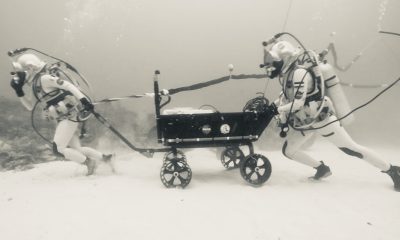

Robbie Schmittner Robbie is the former owner of Xibalba Dive Center & Hotel. He has been exploring the caves of the Yucatan for the past twenty...


Semi-closed rebreathers (SCR) were the first purpose-built breathers for sport divers circa 1995—Thank you Draeger! But while tekkies clearly needed mixed-gas units, many believed that recreational...


Good things come in threes. At least that’s what explorer and former commercial diver Axel Schoeller believed when he needed a specialized rebreather platform for a...


New diving science initiative brings blue economy innovation from the Ocean State to the Arizona desert’s Biosphere 2 University of Arizona Professor achieves an underwater first...


In February, Dr. Richard Harris aka Dr. Harry and the Wet Mules conducted the world’s first hydrogen rebreather dive to a test depth of 230 m...


Third party rebreather testing is expensive and arguably provides limited data to users and or rebreather builders about scrubber performance. As such, it is rarely used...


Dr. Clarke’s geeky new monograph on the inner workings of rebreather scrubbers represents the culmination and synthesis of more than three decades of Naval research, as...


Apple made a big splash in diveworld with the recent announcement of its new Ultra Watch featuring Oceanic’s dive computing app. And though the initial implementation...


Armed with reliable rebreathers, expedition-grade scooters, electric heating, helium mixes, high-powered dive computers, and those all-important P-valves, today’s cave explorers are giving our collective underwater envelope...


This month, we continue to explore innovative rebreathers on today’s market with a dive into KISS’s split-canister designed mCCR, the Sidewinder, launched in 2016. Designed to...